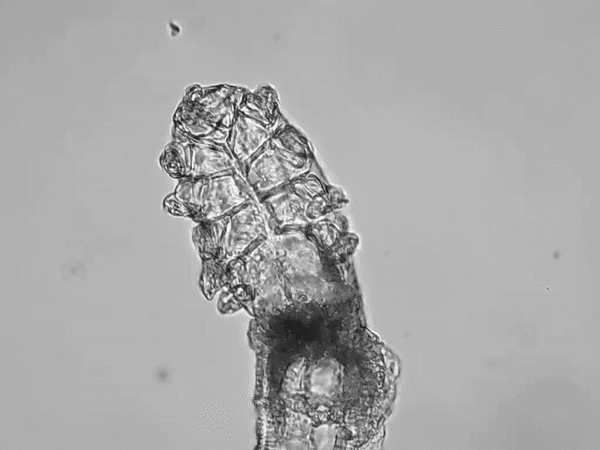
Our Focus
Blepharitis is a common ocular condition, characterized by inflammation of the eyelid, which can impact the anterior or posterior lid or both.
People with anterior blepharitis typically have red, irritated, or itchy eyelids with debris on the eyelashes.
Blepharitis affects at least 20 million Americans and is one of the most common reasons people visit an eye doctor.
It can be caused by multiple factors including infestation of Demodex mites. Demodex mites are the most common ectoparasite found on humans. There are two species of Demodex – folliculorum and brevis – that live on the skin of the face and eyelids.
While they are highly prevalent in low numbers, it is an infestation of Demodex folliculorum mites that is implicated as a cause of blepharitis in 45% of cases.
Demodex Infestation Can Cause Disease in Three Main Ways:
Mechanical
Overcrowded mites scrape the epithelial cell lining with their claws and lay eggs in the follicle causing follicular distention, misdirected lashes, madarosis and irritation. Dead mites and collarettes also obstruct the hair follicle opening, leading to inflammation.
Chemical
Mites excrete digestive enzymes as they feed and exude digestive waste when they die causing inflammation, hyperemia, irritation, and epithelial hyperplasia.
Bacterial
Bacteria living on the mite surface or in its gut cause inflammation of the surrounding ocular tissues.
Demodex Blepharitis can be diagnosed when collarettes, a pathognomonic sign of Demodex infestation, are seen with a routine slit-lamp exam.
See How Demodex Mites Cause Disease
Currently, there are 2.1M blepharitis diagnoses per year, but no FDA approved treatments.
If left unmanaged, Demodex Blepharitis may lead to tear film instability with fluctuating and blurred vision, lid and lash abnormalities, inflammation of the conjunctiva and surrounding skin, suboptimal surgical outcomes, contact lens intolerance and reduced wear time, noticeable eye and eyelid redness, and lower patient quality of life.
1. American Academy of Ophthalmology Cornea/External Disease Panel. Preferred Practice Panel Guidelines: Blepharitis. San Francisco, California: American Academy of Ophthalmology; 2013. www.aao.org/ppp. 2. Lemp et al. Blepharitis in the United States 2009: A Survey-based Perspective on Prevalence and Disease. The Ocular Surface, May 2009. 3. Harmon, Market Scope Dry Eye Analyst Report, 2014 4. MGD Report IOVS, Special Issue 2011, Vol. 52, N. 4 5. Zhao YE, Wu LP, Hu L, Xu JR. Association of blepharitis with Demodex: a meta-analysis. Ophthalmic Epidemiol 2012;18=9:95-102. 6. English FP. Demodex folliculorum and oedema of the eyelash. Br J Ophthalmol. 1971;55(11):742-746. doi:10.1136/bjo.55.11.742 7. Rufli T, Mumcuoglu Y. The hair follicle mites Demodex folliculorum and Demodex brevis: biology and medical importance. A review. Dermatologica. 1981;162(1):1-11. 8. Desch C.E., Channabasavanna G.P. and Viraktamath C.A. 1989. Progress in Acarology. Brill Archive. Pgs 187-188. 9. Coston TO. Demodex folliculorum blepharitis. Trans Am Ophthalmol Soc. 1967;65:361-392.10. Fromstein. Demodex blepharitis: clinical perspectives. Clinical Optometry. 2018 11. Nicholls SG, Oakley CL, Tan A, Vote BJ. Demodex species in human ocular disease: new clinicopathological aspects. Int Ophthalmol. 2017;37(1):303–312. 12. Gao Y-Y, Di Pascuale MA, Li W, et al. High Prevalence of Demodex in Eyelashes with Cylindrical Dandruff. Investig Opthalmology Vis Sci. 2005;46(9):3089. doi:10.1167/iovs.05-0275 13. American Optometric Association. Glossary of Common Eye and Vision Conditions. Accessed April 2020. 14. Primary Care Optometry News. Treat Blepharitis Preoperatively for Optimal Cataract Surgery Results. November/December 2010. 15. Symphony Claims data 2018-2019






